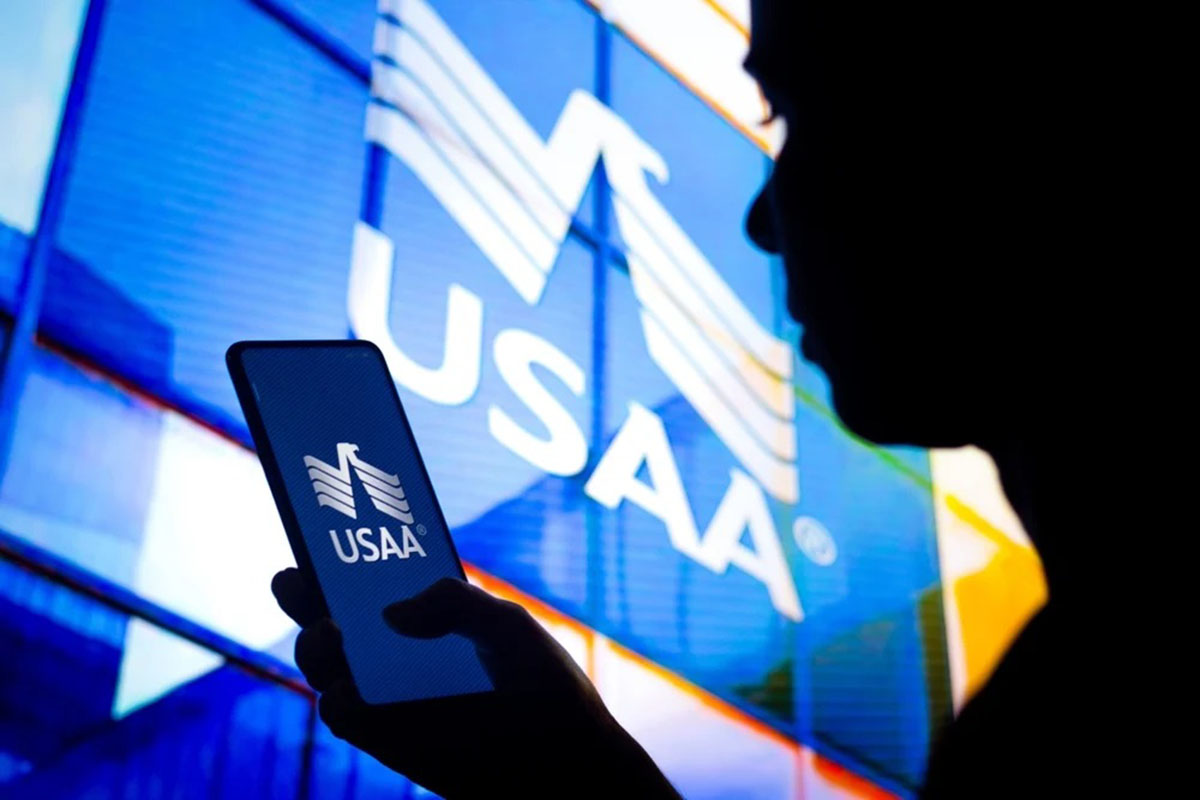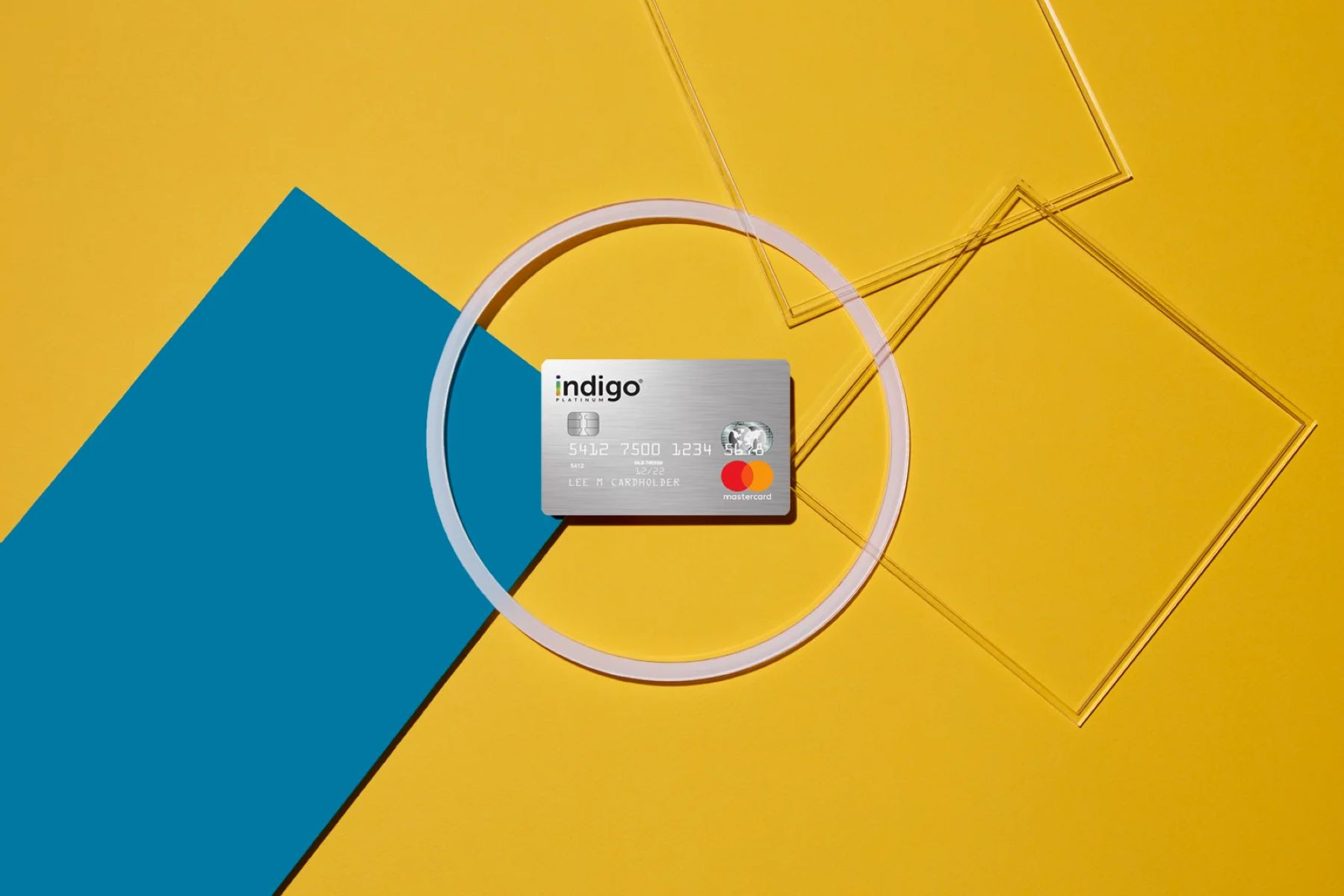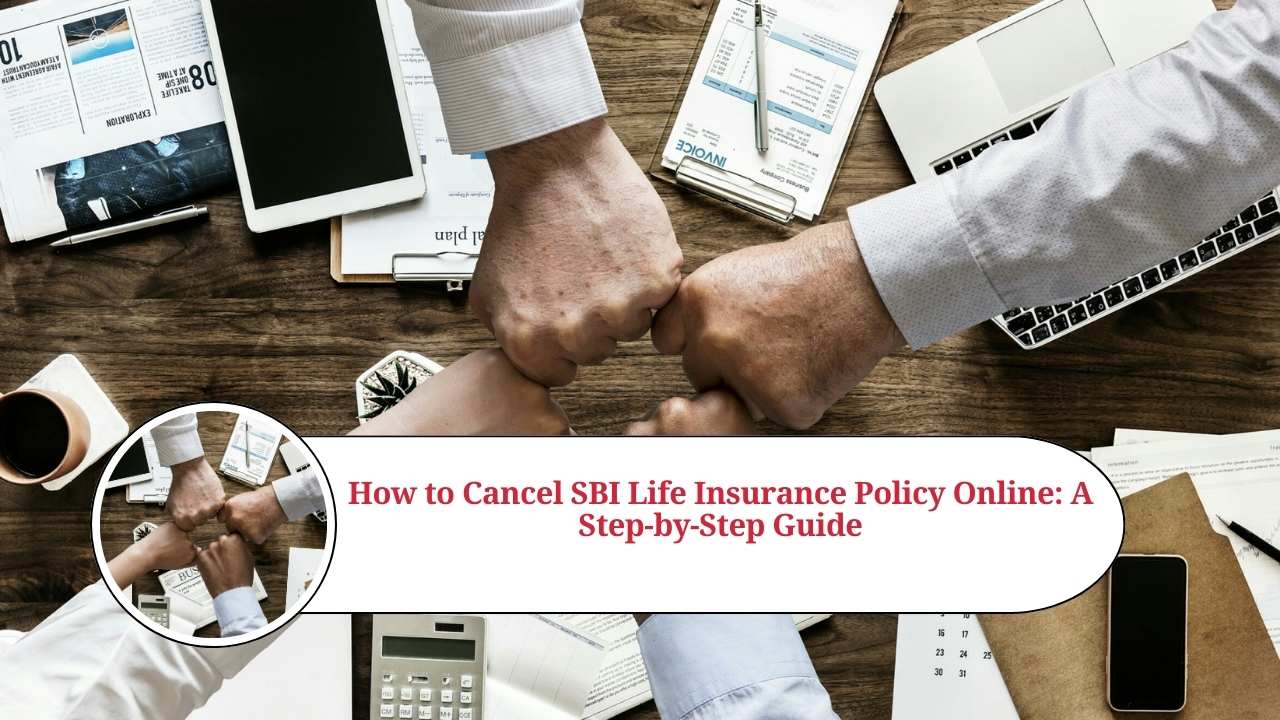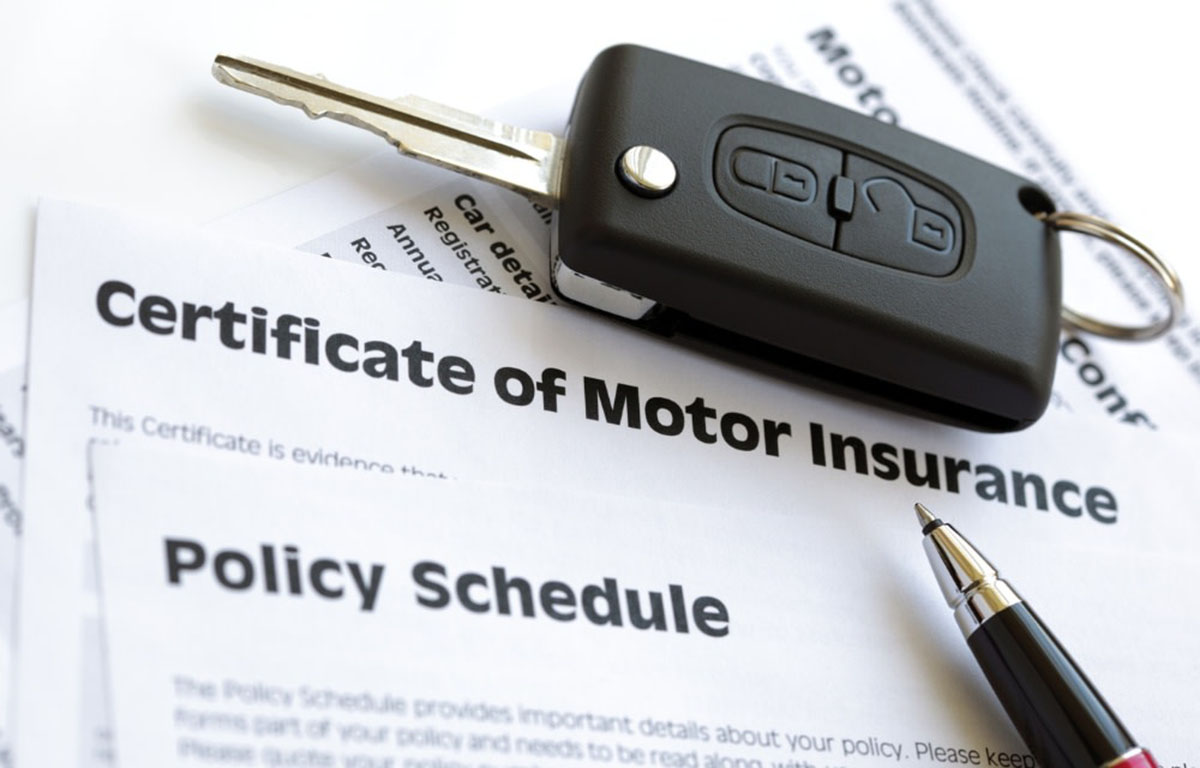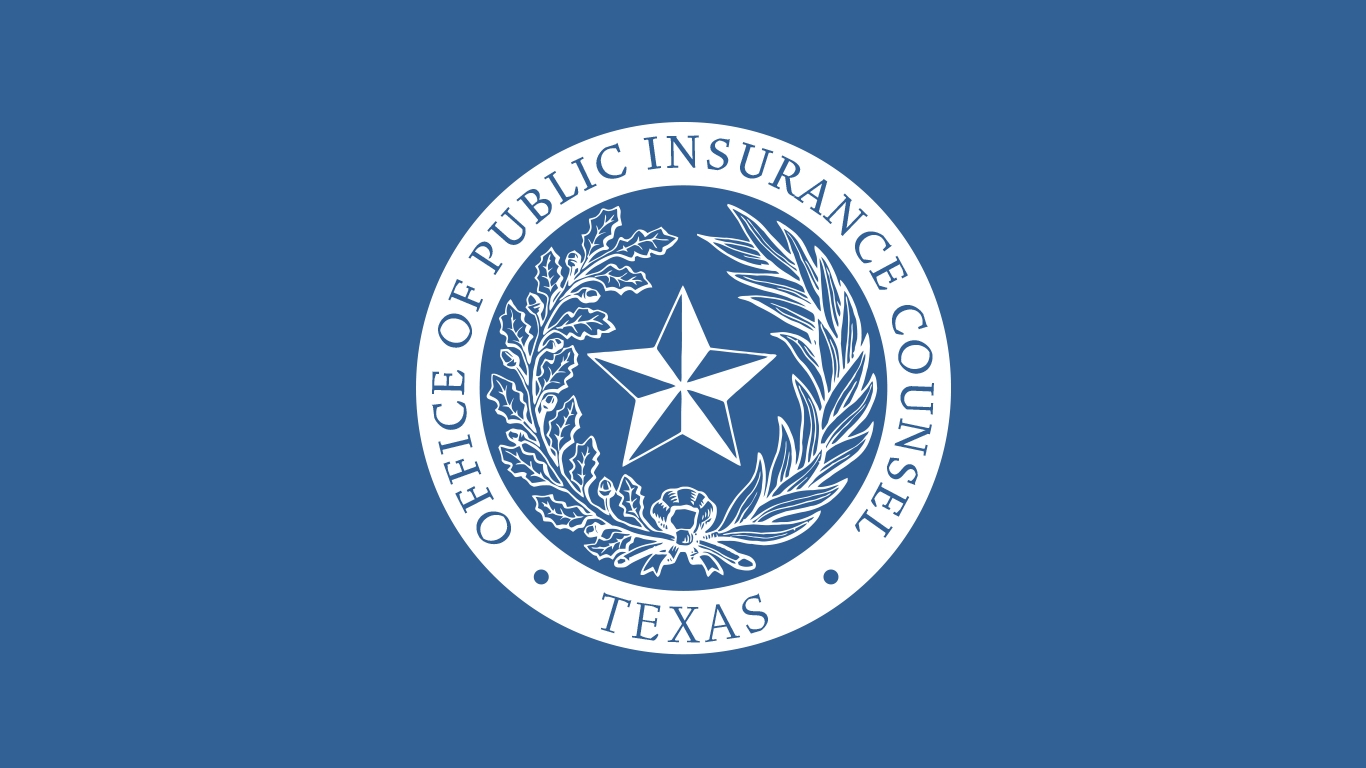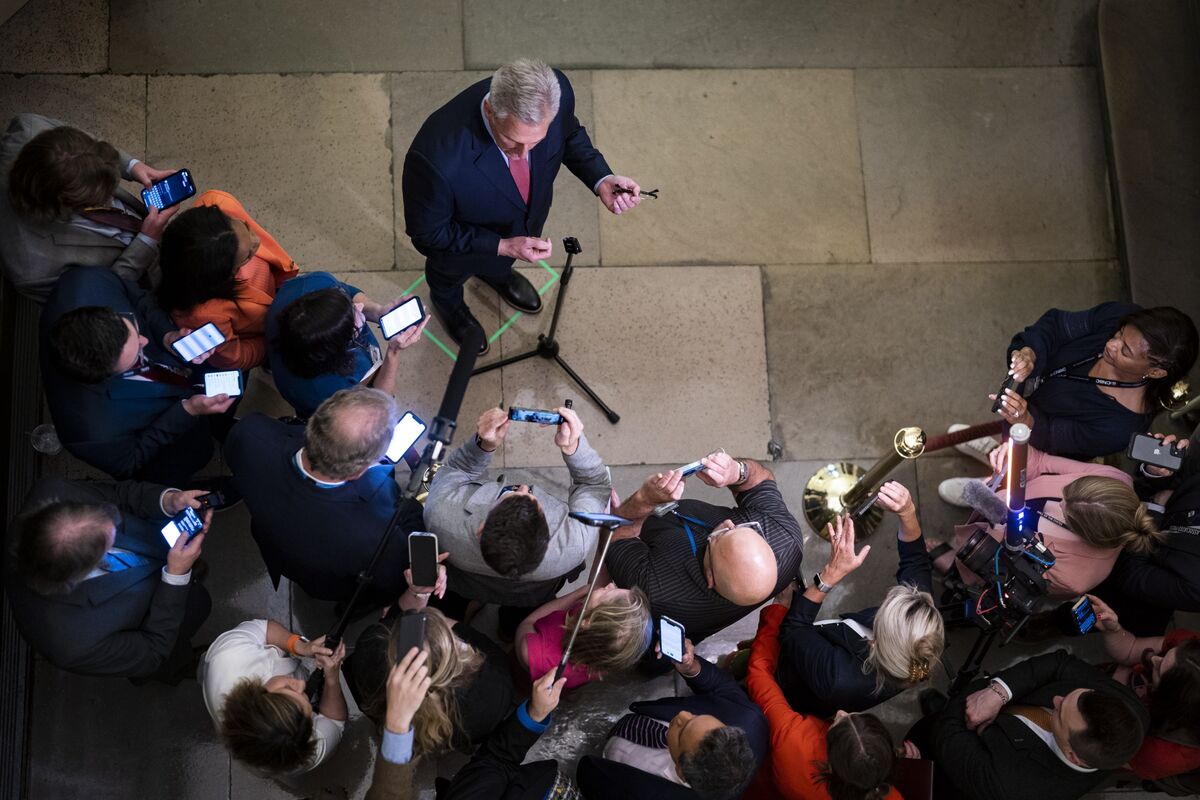

Finance
How Do I Cancel My Student Loan?
Published: November 3, 2023
Looking to cancel your student loan? Discover effective finance strategies and learn how to navigate the process by reading our comprehensive guide today!
(Many of the links in this article redirect to a specific reviewed product. Your purchase of these products through affiliate links helps to generate commission for LiveWell, at no extra cost. Learn more)
Table of Contents
- Introduction
- Understanding Student Loan Cancellation
- Types of Student Loan Cancellation
- Eligibility Requirements for Student Loan Cancellation
- Step-by-Step Guide: How to Cancel Your Student Loan
- Common Mistakes to Avoid When Canceling Your Student Loan
- Consequences of Canceling Your Student Loan
- Alternatives to Canceling Your Student Loan
- Frequently Asked Questions about Student Loan Cancellation
- Conclusion
Introduction
Student loans are a common financial burden for many individuals pursuing higher education. However, there are instances where borrowers may find themselves in a position to cancel their student loans. Student loan cancellation, also known as loan forgiveness or discharge, refers to the process of eliminating the obligation of repaying your student loan.
While canceling a student loan may seem like a dream come true, it’s important to understand the various types of student loan cancellation, eligibility requirements, and potential consequences before making a decision. This article will guide you through the process, providing you with the necessary information to make an informed choice.
Understanding the different types of student loan cancellation is crucial. There are several options available depending on your circumstances. Public service loan forgiveness, teacher loan forgiveness, and disability discharge are just a few examples. Each type has specific eligibility requirements that you must meet in order to be considered for loan cancellation.
Eligibility is another important factor to consider. Federal student loans often have specific criteria for cancellation, while private loans may have different options or may not offer cancellation at all. It’s essential to review the terms of your loan agreement and consult with your loan servicer or financial advisor to determine whether you qualify for cancellation.
The process of canceling your student loan requires careful consideration and adherence to specific steps. It’s crucial to follow the correct procedures to ensure a smooth cancellation process. This article will provide you with a step-by-step guide to help you navigate through the necessary paperwork and apply for student loan cancellation.
However, it’s important to be aware of common mistakes to avoid when canceling your student loan. These mistakes can lead to delay or even denial of your cancellation application. By understanding these pitfalls, you can take the necessary precautions to ensure a successful cancellation process.
Canceling your student loan may have consequences that you should be aware of. While loan cancellation provides relief from the burden of debt, it can also have potential financial ramifications. This article will explore the potential consequences and considerations involved in canceling your student loan, allowing you to make an informed decision.
Lastly, if canceling your student loan is not the right option for you, there are alternatives to consider. Loan consolidation, income-driven repayment plans, and loan refinancing are some options that may help manage your student loan debt without canceling it entirely. Exploring these alternatives can provide you with a more comprehensive understanding of your options.
Overall, understanding student loan cancellation is crucial for borrowers seeking to alleviate their financial burden. This article aims to guide individuals through the intricacies of loan cancellation, providing them with the information needed to make informed decisions about their student loans.
Understanding Student Loan Cancellation
Student loan cancellation, also known as loan forgiveness or discharge, is a process that allows borrowers to eliminate their obligation to repay their student loan. This can provide much-needed relief for individuals who are struggling with their loan payments or facing financial hardship.
There are various reasons why a student loan may be eligible for cancellation. These reasons can include working in certain public service professions, experiencing a total and permanent disability, or attending a school that closes before you complete your program. In some cases, loans may also be canceled due to fraud or the death of the borrower.
It’s important to note that student loan cancellation is typically only available for federal student loans. Private student loans generally do not offer cancellation options, although some private lenders may have their own unique programs in place.
One of the most common types of student loan cancellation is Public Service Loan Forgiveness (PSLF). This program was established to encourage individuals to work in public service jobs, such as government or non-profit organizations, by offering loan forgiveness after 120 qualifying payments. To be eligible for PSLF, borrowers must be employed full-time by a qualifying employer and make their loan payments through an eligible repayment plan.
Teacher Loan Forgiveness is another type of cancellation available to educators who work in low-income schools or educational service agencies. This program provides loan forgiveness of up to $17,500 for eligible teachers who have been teaching for five consecutive years.
Another form of cancellation is disability discharge. This option is available to borrowers who have become totally and permanently disabled and are unable to work and repay their loans. To qualify for disability discharge, borrowers must provide medical documentation of their disability.
In cases where a school closes before a student is able to complete their program, the borrower may be eligible for borrower defense to repayment cancellation. This cancellation option allows students to have their federal student loans forgiven if they can prove that the school engaged in fraudulent or deceptive practices.
Understanding the different types of student loan cancellation is crucial for borrowers who are considering this option. It’s important to carefully review the requirements and qualifications for each program to determine if you meet the criteria for cancellation. Consulting with your loan servicer or financial advisor can also provide valuable guidance in this process.
Overall, student loan cancellation provides an avenue for borrowers to seek relief from their student loan debt. By understanding the various types of cancellation and their eligibility requirements, borrowers can make informed decisions about pursuing loan forgiveness or discharge.
Types of Student Loan Cancellation
Student loan cancellation offers borrowers the opportunity to have their student loans forgiven or discharged under specific circumstances. Understanding the different types of student loan cancellation can help borrowers determine if they qualify for any of these programs. Here are some common types of student loan cancellation:
- Public Service Loan Forgiveness (PSLF): This program is designed to encourage individuals to work in public service jobs. Borrowers who work full-time for qualifying employers, such as government or non-profit organizations, can have their loans forgiven after making 120 qualifying payments under an eligible repayment plan. It’s important to note that PSLF only applies to Direct Loans.
- Teacher Loan Forgiveness: This cancellation program is available for teachers working in low-income schools or educational service agencies. Teachers who have been teaching for five consecutive years may qualify for up to $17,500 in loan forgiveness.
- Disability Discharge: Borrowers who experience a total and permanent disability that prevents them from working and repaying their loans may be eligible for disability discharge. To qualify, borrowers must provide appropriate documentation of their disability.
- Closed School Discharge: If a borrower’s school closes before they have the opportunity to complete their program, they may be eligible for closed school discharge. This cancellation option applies to both Direct Loans and Federal Family Education Loans (FFEL) Program Loans.
- False Certification Discharge: This cancellation option is available if a borrower’s school falsely certified their eligibility for a loan, as well as if the borrower’s identity was stolen and used without their consent to obtain a loan.
- Borrower Defense to Repayment: Borrowers may be eligible for this cancellation program if they attended a school that engaged in fraudulent or deceptive practices. To qualify, borrowers must provide evidence of the school’s misconduct.
It’s essential to note that eligibility criteria and requirements can vary for each type of student loan cancellation. Some programs may only apply to federal student loans, while others may also include private loans. Additionally, specific documentation and application processes must be followed to be considered for cancellation.
Researching and understanding the various types of student loan cancellation can help borrowers determine if they qualify for any of these programs. Consulting with your loan servicer or a financial advisor can provide further guidance and clarification on the specific cancellation options available to you.
Remember, each cancellation program has different requirements and qualifications, so it’s crucial to review the specific criteria to determine if you meet the necessary conditions for loan forgiveness or discharge.
Eligibility Requirements for Student Loan Cancellation
Student loan cancellation programs have specific eligibility requirements that borrowers must meet in order to qualify for loan forgiveness or discharge. It’s important to understand these requirements to determine if you are eligible for student loan cancellation. Here are some common eligibility requirements for student loan cancellation:
- Employment: Many loan cancellation programs, such as Public Service Loan Forgiveness (PSLF), require borrowers to be employed full-time by qualifying employers. This may include government agencies and non-profit organizations. Each program may have different employment requirements, so it’s important to review the specific criteria for the program you are interested in.
- Payment History: Some cancellation programs, like PSLF, require borrowers to make a certain number of on-time, qualifying payments. For example, PSLF requires 120 qualifying payments before borrowers can apply for loan forgiveness. It’s crucial to ensure that you meet the payment history requirements outlined by the specific cancellation program.
- Teaching Service: Eligibility for teacher loan forgiveness programs typically requires borrowers to be employed as teachers for a specified period of time. This may include teaching in low-income schools or educational service agencies. To qualify for teacher loan forgiveness, a borrower must provide documentation of their teaching service.
- Disability Documentation: For disability discharge, borrowers must provide appropriate documentation to prove their total and permanent disability. This may include medical records, statements from medical professionals, or proof of Social Security Disability Insurance (SSDI) or Supplemental Security Income (SSI) benefits.
- School Closure: If a borrower’s school closes while they are enrolled or within a certain timeframe after withdrawal, they may be eligible for closed school discharge. Documentation of the school closure and enrollment at the time of closure may be required to qualify for this type of cancellation.
- Fraud or Misconduct: Borrowers seeking borrower defense to repayment cancellation must demonstrate that their school engaged in fraudulent or deceptive practices. This may require providing evidence of the school’s misconduct, such as lawsuits, investigations, or accreditation issues.
It’s important to thoroughly review the specific eligibility requirements for the cancellation program you are interested in. In some cases, additional documentation or verification of eligibility may be necessary. Consulting with your loan servicer or a financial advisor can provide further clarification on the eligibility requirements for student loan cancellation programs.
It’s worth noting that eligibility criteria and requirements can vary for each type of student loan cancellation. Some programs may only apply to federal student loans, while others may include private loans. Understanding the specific criteria will help you determine if you meet the necessary conditions for loan forgiveness or discharge.
By understanding the eligibility requirements for student loan cancellation, you can determine if you qualify for any of these programs and take the necessary steps to pursue loan forgiveness or discharge.
Step-by-Step Guide: How to Cancel Your Student Loan
If you meet the eligibility requirements and have decided to cancel your student loan, here is a step-by-step guide to help you through the process:
- Research your loan cancellation options: Start by understanding the different types of student loan cancellation programs and determine which ones you may be eligible for. Research the specific requirements and qualifications for each program to ensure you meet the criteria.
- Gather necessary documentation: Depending on the type of cancellation you’re pursuing, you may need to gather certain documents. This could include employment verification, teaching service documentation, medical records for disability discharge, evidence of school closure, or proof of fraudulent practices.
- Contact your loan servicer or lender: Reach out to your loan servicer or lender to discuss your intent to cancel your student loan. They can provide guidance on the specific steps you need to take and any additional documentation required.
- Complete the appropriate cancellation application: Each cancellation program has its own application process. Fill out the application carefully, providing accurate information and attaching any required documentation. Be sure to follow the instructions provided and submit the application within the specified deadline.
- Keep copies of all documents: Make copies of all documents you submit, including your cancellation application and any supporting materials. This will help you have a record of your application in case any issues arise.
- Follow up with your loan servicer or lender: After submitting your application, follow up with your loan servicer or lender to ensure that your application is being processed. Stay in contact and be proactive in addressing any questions or concerns they may have.
- Continue making payments if necessary: While your cancellation application is being processed, continue making your loan payments as required. Ceasing payments prematurely could have negative consequences on your loan status.
- Review your cancellation decision: If your cancellation application is approved, carefully review the terms and conditions of the cancellation. Understand any potential tax implications or obligations that may arise from the forgiven loan amount. Seek professional advice if necessary.
- Notify relevant parties: Inform your employer, if applicable, about the outcome of your cancellation. Depending on the program, they may need to verify your employment or service duration to ensure your loan qualifies for cancellation.
Remember, the process of canceling your student loan may vary depending on the type of cancellation and your individual circumstances. Consulting with your loan servicer, lender, or a financial advisor can provide valuable guidance throughout the process.
By following this step-by-step guide, you can navigate the process of canceling your student loan and work towards freeing yourself from the burden of student debt.
Common Mistakes to Avoid When Canceling Your Student Loan
Canceling your student loan can be a complex process, and it’s crucial to avoid common mistakes that could potentially delay or jeopardize your cancellation application. By being aware of these pitfalls, you can take the necessary precautions to ensure a smooth cancellation process. Here are some common mistakes to avoid:
- Missing deadlines: Each student loan cancellation program has specific deadlines for submitting applications. Failing to meet these deadlines could result in your application being denied. Be sure to carefully review the instructions and submit your application on time.
- Not understanding the requirements: Thoroughly review the eligibility requirements and qualifications for the cancellation program you’re applying to. Not understanding the necessary criteria could lead to submitting an incomplete or inaccurate application, which may result in denial.
- Providing incomplete or incorrect information: When completing your cancellation application, ensure that all information is accurate and complete. Any missing or incorrect information could delay the processing of your application. Double-check your application before submission.
- Not including supporting documentation: Many cancellation programs require specific documentation to support your eligibility. Failing to provide the necessary documentation or submitting incomplete documents can lead to a denial. Gather all the required documentation and ensure it is included with your application.
- Disregarding communication from your loan servicer: Stay in contact with your loan servicer or lender throughout the cancellation process. Ignoring any correspondence or failing to respond to requests for additional information can lead to your application being delayed or denied.
- Stopping loan payments prematurely: While your cancellation application is being processed, continue making your loan payments as required. Ceasing payments prematurely can negatively impact your loan status and may result in penalties or additional interest charges.
- Not exploring other repayment options: Before deciding to cancel your student loan, explore alternative repayment options that may be more suitable for your financial situation. Loan consolidation, income-driven repayment plans, or loan refinancing may provide relief without canceling your loan entirely.
- Not seeking professional advice: If you’re unsure about the cancellation process or have specific concerns, seek advice from a financial advisor or student loan expert. They can provide valuable guidance and ensure you make informed decisions throughout the process.
Avoiding these common mistakes can help streamline the cancellation process and increase the likelihood of a successful outcome. It’s essential to take your time, thoroughly understand the requirements, and pay attention to detail when completing your cancellation application.
By being proactive and cautious, you can navigate the cancellation process effectively and potentially free yourself from the burden of student loan debt.
Consequences of Canceling Your Student Loan
While canceling your student loan may seem like a tempting solution to eliminate your debt, it’s crucial to consider the potential consequences that may arise from this decision. Canceling your student loan can have both immediate and long-term effects on your finances. Here are some common consequences to be aware of:
- Tax Implications: Canceling your student loan may result in a taxable event. The forgiven amount of your loan could be considered taxable income by the IRS. This means you may be required to report the forgiven amount as income on your tax return, potentially leading to a higher tax liability.
- Loss of Potential Benefits: Some cancellation programs, such as Public Service Loan Forgiveness, offer additional benefits to borrowers. These benefits can include loan repayment assistance, interest subsidies, or deferment options. By canceling your loan, you may lose access to these benefits in the future.
- Reduced Credit Score: Canceling your student loan can impact your credit score. Student loans are typically considered installment loans, and having a long history of consistent payments can positively impact your credit. When you cancel your loan, that credit history is closed, potentially resulting in a temporary decrease in your credit score.
- Loss of Borrower Protections: Federal student loans offer various borrower protections, such as income-driven repayment plans and loan deferment or forbearance options. Canceling your loan means you will no longer have access to these protections if you encounter financial difficulties in the future.
- Ability to Obtain Future Credit: Canceling your student loan may impact your ability to obtain credit in the future. Lenders may consider your debt cancellation as an indicator of creditworthiness and may be hesitant to extend credit to you without the guarantee of repayment.
- Long-Term Financial Planning: Canceling your student loan may disrupt your long-term financial plans. It’s essential to consider how canceling the loan fits into your overall financial goals and retirement plans. Depending on your unique circumstances, there may be more strategic ways to manage your student loan debt without canceling it entirely.
Prior to canceling your student loan, it’s essential to carefully evaluate the potential consequences. Take the time to weigh the short-term benefits of canceling your loan against the long-term impacts on your financial situation. Consulting with a financial advisor can provide valuable insights and help you make an informed decision.
Remember, canceling your student loan is a significant financial decision, and it’s important to consider all the potential consequences before proceeding. Take the time to understand the implications and assess whether canceling your student loan aligns with your overall financial goals and priorities.
Alternatives to Canceling Your Student Loan
While canceling your student loan may be an appealing option, it’s important to consider alternative strategies that can help you manage your debt without completely canceling it. Here are some alternatives to explore:
- Loan Consolidation: Consolidating your student loans can simplify repayment by combining multiple loans into a single loan with a fixed interest rate. This can make it easier to manage your payments and potentially reduce your monthly payment amount.
- Income-Driven Repayment Plans: Income-driven repayment plans adjust your monthly loan payments based on your income and family size. These plans can be helpful if you’re facing financial hardship or have low income relative to your loan amount. They can help make your payments more affordable, and any remaining balance after a certain period of time may be eligible for forgiveness.
- Loan Refinancing: Refinancing your student loans involves obtaining a new loan with a private lender to pay off your existing loans. By refinancing, you may be able to secure a lower interest rate, reduce your monthly payments, or change the repayment term. However, it’s important to note that by refinancing federal student loans, you may lose certain federal borrower benefits.
- Targeted Repayment: Rather than canceling your loan, you may consider focusing your efforts on paying down your loan aggressively. By allocating extra funds towards your loan payments, you can reduce the overall interest you pay and potentially pay off your loan faster.
- Seeking Loan Assistance Programs: Some professions or organizations offer loan assistance programs to help individuals manage their student loan debt. These programs may include loan repayment assistance, scholarships, or grants for eligible borrowers. Research loan assistance programs in your field or inquire with your employer about any available options.
- Strategic Financial Planning: Take a comprehensive look at your financial situation and consider how your student loan fits into your overall financial goals. Review your budget, savings, and investment plans to determine the best approach for managing your student loan while working towards your long-term financial objectives.
Before making any decisions, carefully evaluate each alternative and consider your personal circumstances. Each option has its own benefits and considerations, so it’s important to assess which aligns best with your financial goals.
Additionally, seeking guidance from a financial advisor or student loan expert can provide valuable insight into the best strategy for managing your student loan debt. They can help you navigate the various options available and help you make an informed decision based on your individual needs.
Remember, canceling your student loan should not be the only approach considered. Exploring alternatives can provide you with more flexibility in managing your debt and ensure that you choose the option that best suits your financial situation.
Frequently Asked Questions about Student Loan Cancellation
Here are answers to some commonly asked questions about student loan cancellation:
- Can all student loans be canceled?
Not all student loans are eligible for cancellation. Typically, federal student loans offer more cancellation options compared to private student loans. It’s important to review the terms and conditions of your specific loan to determine if cancellation is an option. - What is the difference between forgiveness and discharge?
Forgiveness and discharge are often used interchangeably, but there can be slight differences in their meanings. Loan forgiveness typically refers to the cancellation of a loan after meeting specific requirements, such as making a certain number of qualifying payments. Discharge, on the other hand, usually refers to the cancellation of a loan due to extenuating circumstances, such as disability or school closure. - What is Public Service Loan Forgiveness (PSLF)?
Public Service Loan Forgiveness is a program that forgives the remaining student loan balance after 120 qualifying monthly payments while working full-time for a qualifying employer, such as a government or non-profit organization. - Can I cancel my student loans if I don’t work in public service?
Yes, there are cancellation options available for borrowers who don’t work in public service. Other cancellation programs include Teacher Loan Forgiveness, disability discharge, closed school discharge, and borrower defense to repayment. These programs have specific eligibility requirements that must be met. - Will canceling my student loan affect my credit score?
Canceling your student loan may have some initial impact on your credit score. However, it’s important to consider that maintaining a good payment history and managing other aspects of your credit can help mitigate any temporary decrease in your credit score. - Do I have to pay taxes on canceled student loan debt?
In most cases, canceled student loan debt is considered taxable income. The forgiven amount may need to be reported on your tax return, potentially resulting in a higher tax liability. However, there are some exceptions, such as loan forgiveness through the PSLF program, which is not taxable. - Can I cancel my student loans if I’ve already defaulted on them?
In certain situations, defaulted student loans may still be eligible for cancellation, such as through disability discharge or borrower defense to repayment. It’s important to explore your options and consult with your loan servicer or a financial advisor for guidance. - Can I cancel part of my student loans or only the full amount?
Cancellation programs can vary in terms of whether they offer full or partial loan cancellation. Some programs may forgive the entire remaining balance, while others may only provide partial forgiveness. Review the specific requirements of each program to fully understand the potential cancellation options.
These are just a few common questions about student loan cancellation. Remember that the specific details and requirements may vary depending on your loan type and the cancellation program you’re considering. Consulting with your loan servicer or a financial advisor can provide personalized guidance and clarification based on your individual circumstances.
Conclusion
Student loan cancellation can offer much-needed relief for borrowers struggling with their student loan debt. However, it’s important to approach the decision with careful consideration and a thorough understanding of the implications. Throughout this article, we have explored various aspects of student loan cancellation, including different types of cancellation, eligibility requirements, the cancellation process, common mistakes to avoid, consequences of cancellation, and alternative strategies to manage student loan debt.
Before pursuing loan cancellation, it is crucial to research and understand the specific eligibility requirements for each program. This will ensure that you meet the necessary criteria and have all the required documentation. Avoiding common mistakes, such as missing deadlines or providing incomplete information, will help streamline the process and increase the chances of a successful application.
While canceling your student loan may seem like an attractive option, it’s essential to be aware of the potential consequences. These can include tax implications, loss of potential benefits, impacts on your credit score, and limitations on future credit opportunities. Taking the time to evaluate these consequences and explore alternative strategies, such as loan consolidation, income-driven repayment plans, or loan refinancing, can provide more flexibility in managing your student loan debt.
If you decide to cancel your student loan, following the step-by-step process outlined in this article can help navigate the application process effectively. Staying in communication with your loan servicer or lender is important throughout the process to ensure a smooth and timely cancellation.
Lastly, it’s crucial to seek professional advice when needed. Consulting with a financial advisor or student loan expert can provide valuable insights based on your specific circumstances. They can guide you in making informed decisions and help you navigate through the complexities of student loan cancellation.
Remember, while canceling your student loan can provide temporary relief, it’s important to carefully evaluate the long-term impacts and consider how it aligns with your financial goals. By taking a holistic approach to managing your student loan debt, you can make the best decision for your financial future.


